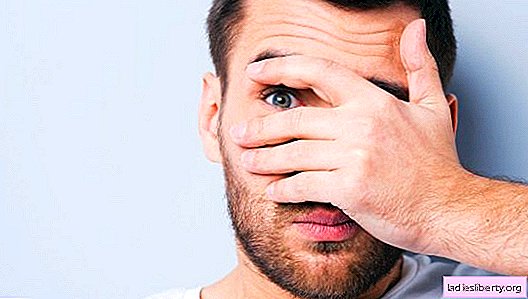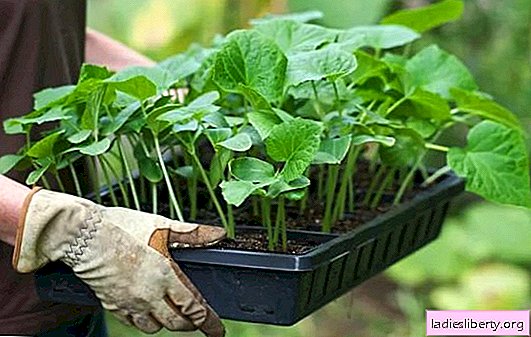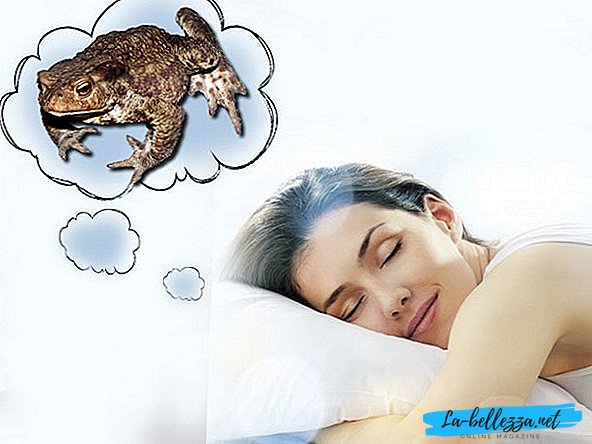
If you believe the medical statistics, almost every second person in the world suffers from pathologies of the musculoskeletal system (musculoskeletal system). The most common arthritis and arthrosis.
There are many reasons for this: age, physical activity, or, conversely, lack of exercise.
Meanwhile, it is not at all difficult to prevent the development of pathological processes in the musculoskeletal system. To do this, you need to find only one hour of personal time per day, and this hour to spend on gymnastics.
Especially effective complexes of articular gymnastics according to Bubnovsky. What are these exercises, how to do them, and which are most effective?
Since the description of articular gymnastics by Bubnovsky would take more than a dozen pages, we present only the most effective exercises of the complexes of this specialist.
For convenience, you should subdivide all exercises into several complexes:
• Exercises for the hip joints.
• Exercises for knee joints.
• Gymnastics for the spine.
• Exercises for the ankle joint.
The simplest exercises of articular gymnastics Bubnovsky
These sets of exercises are ideal for people suffering from pathologies of acute obstructive diseases in the acute stage (except for some exercises), as well as for the prevention of the development of diseases.
Complex number 1
This complex is prescribed for problems with the hip joints.
1) Lie in the “on the stomach” position. Legs should be straightened, hands "at the seams", parallel to the torso. On inspiration, slightly raise one leg. The angle of inclination should be no more than 12-15 degrees. Hold the limb in this position for 25-40 seconds (depending on the state of health and well-being at the moment).
2) Position as in the previous exercise. Add some dynamics. Now you need to perform exercise 1, but instead of maintaining the position of the limb, you need to change the legs every few seconds, raising them and lowering them.
3) The starting position is identical. Raise both legs up to 20 degrees relative to the floor. Hold the limbs in this position for about a few seconds, then spread it apart and gently lower it. It is important not to make sudden movements.
4) Lie on the floor, the position is "on its side." Bend the leg (in the knee joint), the second leg is straight. Raise the bent leg relative to the floor by 50 degrees. Hold the limb in this position for several seconds. Then slowly lower the leg and return to the starting point. Perform an identical exercise with the opposite leg.
5) Take the position of "sitting on the floor." Straighten your legs. On account of the “time”, bend to the feet, trying to reach the fingers and grab them with your hands. Hold in this position for a minute or two, return to the original position
When performing such exercises, it is important to observe the smoothness and leisurely movements so that there is no pinching of the nerve endings. To facilitate the implementation, refer to the photo of articular gymnastics Bubnovsky. It shows the correct starting points for performing gymnastic "exercises":

Do each exercise 7-12 times.
What exercises are not recommended:
• Bicycle.
• Squats.
• Long walks.
• Intense leg flexion in the hip joints.
What contraindications exist for the implementation of complex number 1
Not everyone can perform these exercises. There are absolute contraindications:
• GB (hypertension) II degree.
• Blood pathology.
• Problems with heart.
• Hyperthermia.
• Recovery after surgery.
• Start of the menstrual cycle.
• Hernias located in the abdominal cavity.
• A history of a recent femoral fracture.
The complex of exercises №2
Suitable for developing and improving the nutrition of the knee joint.
1) Lie on your stomach. Raise your left foot 10-20 cm from the floor. Hold in this position. Do the same with the right foot.
2) The starting position is identical. Bend both legs at the knees. On the count of one, raise one of the legs as high as possible, hold it for 10 seconds, on the count of two, lower the limb and return to its original position. Perform the exercise with the second leg.
3) Sit on a chair. Take a relaxed pose with bended knees. On the count of times, straighten the leg at the knee and lift it slightly. Keep on weight for 15 seconds. Repeat the exercise with the other leg.
4) The initial position is standing. Hands need to lean on a chair (back). On the account of the "time" to rise smoothly on toes, linger in this position for 10 seconds. At the expense of "two" to fall on his heels. Continue 5-7 times.
5) The position is identical. Get on your heels, linger for 10 seconds. Get back down on your feet.
6) The situation is the same. Stand on the toe of one leg, stretching it as much as possible. "Roll" to the second leg.
7) Rub the knees in a circular motion for 2-5 minutes. This massage helps the knee to relax.
Exercises should not be performed with an actively ongoing inflammatory process in the knee area. This is fraught with complications. You can do gymnastics only during remission or as a preventive measure.
Complex number 3
Designed to develop the spinal column.
Lumbar
1) Take a lying position. According to the “one” account, raise both legs as high as possible, feeling tension in the lumbar region. Hold the limbs in this position.
2) The situation is the same. Bend your legs, press them to your stomach. Linger in a new pose.
Thoracic department
1) Get up straight. At the expense of "times" sharply raise your shoulders as high as possible. At the expense of "two" lower shoulders.
2) Lie on your stomach. Then maximize your back, wanting, as it were, to consider what is in front. Repeat 8-12 times.
Cervical
1) Get up straight. Slowly and smoothly turn your head to the right. Then turn your head to the left. No need to try to turn the neck as much as possible, smoothness is important.
2) Slowly tilt your head, pressing your chin to your chest. Stand in this position for 1-2 minutes, then return to the original position.
These exercises can be performed during an exacerbation.
Complex number 4
It is prescribed for the prevention and treatment of ankle diseases. Exercises can be performed both during exacerbation, and as a preventive measure.
1) Lie down, taking the position "on the back." Bend your knees. At the expense of "one" put one of the legs on the toe and extend the ankle joint as much as possible. At the expense of "two" to lower the limb, stand on the heel. Repeat the same with the other leg.
2) Take a lying position. Legs are stretched forward, hands lie along the body. Pull on the socks of both legs, hold a similar position, then relax the ankle. Repeat 8-12 times, depending on how you feel.
3) Sit in a low chair. Feet put on the floor. Imitate walking.
4) Lie on your back. Feet slightly bent and raised. Start making circular motions with your toes. First one way, then the other. Repeat 8-12 times.
5) Make a fan-like movement with the toes, spreading them to the sides as much as possible. Position - any convenient.
It is important that all movements are smooth, the exercises are performed carefully, without jerking, otherwise the likelihood of injury.
The four complexes described are considered sparing exercises, but this does not make their effectiveness lower.
The most effective exercises of articular gymnastics Bubnovsky
Such exercises can be performed only during remission or as a preventive measure. In the acute phase of the disease, zeal is not recommended.
Complex number 1
For the hip joints. All exercises are performed from the “supine” position.
1) On inspiration, raise your leg up as much as possible. On exhalation, return the leg to a normal position. Change legs.
2) Pull legs to chest without the help of hands. Run 10-12 times.
3) Perform an exercise on the press with bent legs. The lower limbs should be firmly pressed to the floor. Reach with your palms to your knees.
Complex number 2
Exercises for the knee joints.
1) Position - lying on your back. The legs are stretched forward, the body is relaxed. Slowly raise the leg and bend it at the knee, and then pull the knee toward you. Feel the tension in the joint, then also slowly return the leg to its original position.
2) The situation is the same. Bend your knees. Slip your feet on the floor, trying to reach your buttocks with your heel. If the legs do not succeed, help with your hand.
3) Perform the same exercise, but pressing the heel to the buttock, leave the leg in this position for several seconds. Exercises 2 and 3 are performed for each leg 5-7 times.
4) Position - lying on your back. Straighten your leg, bending at the knee, raise 15 cm from the ground. Start performing leg swings, then do the same with the other leg.
5) Lying position. Bend the leg at the knee, push forward. Feet make a swivel motion to the side. Then return the foot to normal position and return the foot back.
6) The position is identical. Bend the leg at the knee, grab your arms, pulling the limb to the shoulder.
7) Lie down. Straighten your leg as much as possible and, raising it by 10-15 cm, continue lifting it up. Stop when discomfort is felt.
8) Perform an exercise on the press. In this case, the hands should be in the lock and brought to the back of the head, legs bent at the knees. Each time you lift the body with your elbow, touch the opposite knee.
9) Perform vertical swings with legs from the prone position.
Abdominal Exercises
1) The back is straight, arms in front of you. Raise your legs and begin to perform the familiar exercise "scissors".
2) Take the pose of the "star", at the expense of "once" raise your legs, at the expense of "two" return to the original position.
3) Perform 10 leg lifts.
Kneeling exercises
1) Alternately raise one knee, try to raise the bent leg as high as possible. The second leg should rest on the knee.
2) Perform the same exercise, but the second leg should try to "pull" the raised leg down, creating a "counterweight" to it.
3) Pull your knees to your chest, trying to reach out.
All movements are uniform, unhurried.
Such training exercises can improve the nutrition of the knee joints and eliminate stagnation.
Complex number 3
For the spine.
1) Position - on all fours. Relax all body muscles as much as possible.
2) From the same position, bend the back as much as possible while exhaling. On inspiration, return to the original position.
3) Get on all fours. Into the "time" account, move your body forward as smoothly as possible, keeping your back straight.
4) Lie on your stomach. Stretch arms and legs. Raise your arms, legs and torso to the “time” account, forming a “swallow”. At the expense of "two" to return to their original position.
5) Get on the ledge (best on the step of the ladder). Hang the heels. To rise on socks for 2-5 minutes (the exercise is performed up to a hundred times).
6) Lying on your back to lift the buttocks and lower back. It is performed on inhalation. Do 18-25 times.
To strengthen the ankle, complex No. 4 from a gentle cycle is recommended. The only difference is that they are performed more times.
For a better understanding of the technology for performing this or that exercise of articular gymnastics Bubnovsky recommended the following video:
In addition, other Bubnovsky exercises are demonstrated here.
Joint gymnastics Bubnovsky: how to do it right
• It is necessary to strictly monitor breathing. So you can determine what intensity of physical activity is optimal. There should not be rapid breathing.
• The intensity of the loads should increase gradually. You should not immediately begin to perform all exercises the maximum number of times.
• Each exercise is recommended to be performed 5-25 times, depending on how you feel and your own abilities.
• You need to practice regularly.
• Perform all exercises with a positive attitude, in a good mood.
• If cramps are observed after exercise, this is normal. This phenomenon is temporary and does not require a suspension of classes.
• It is best done under the supervision of a specialist.
Gymnastics according to Bubnovsky can be a very effective tool. Also, without such light physical exertion, the prevention of diseases of the musculoskeletal system is impossible.











